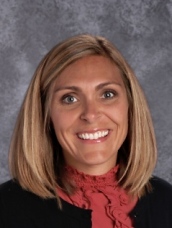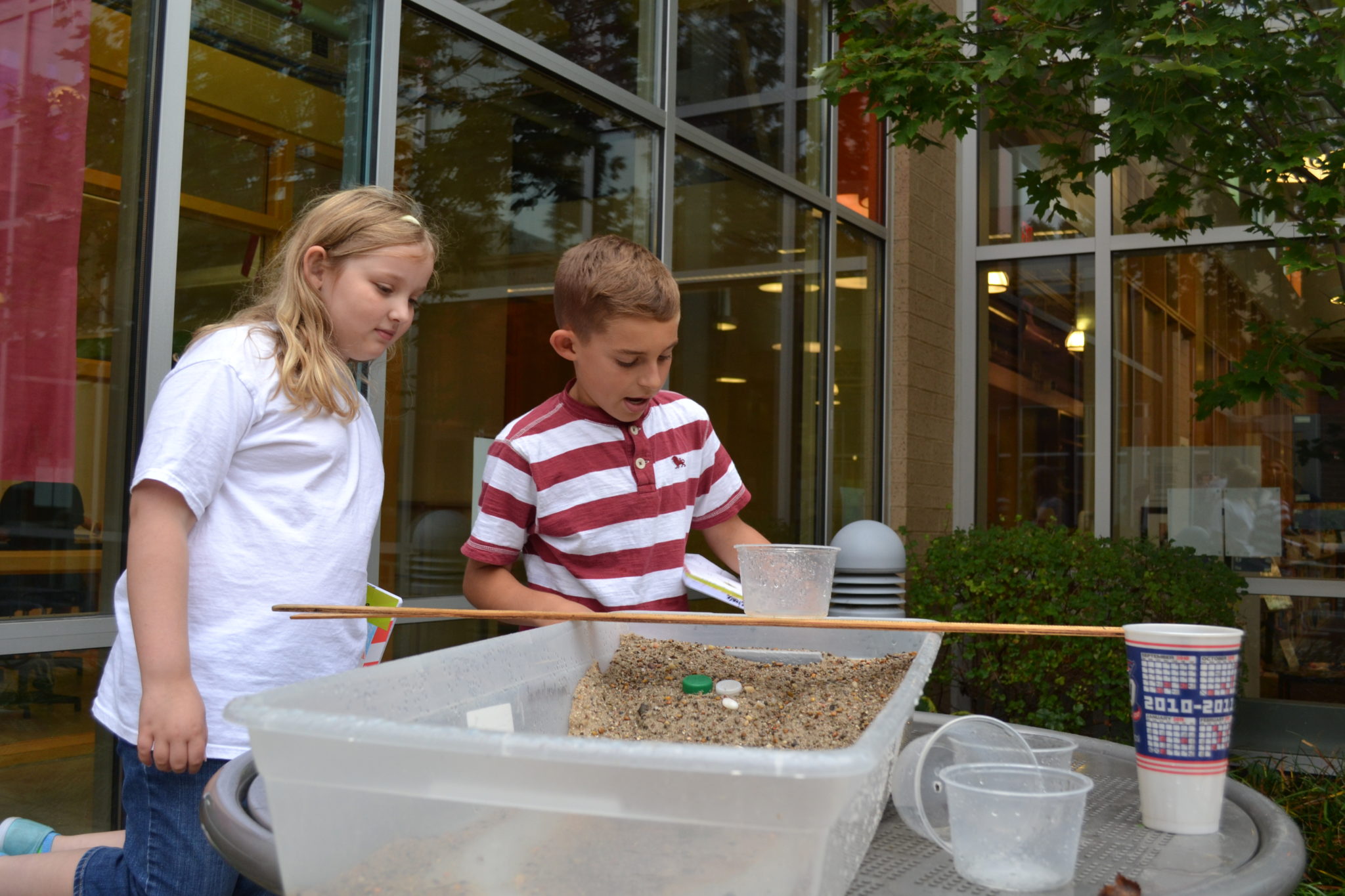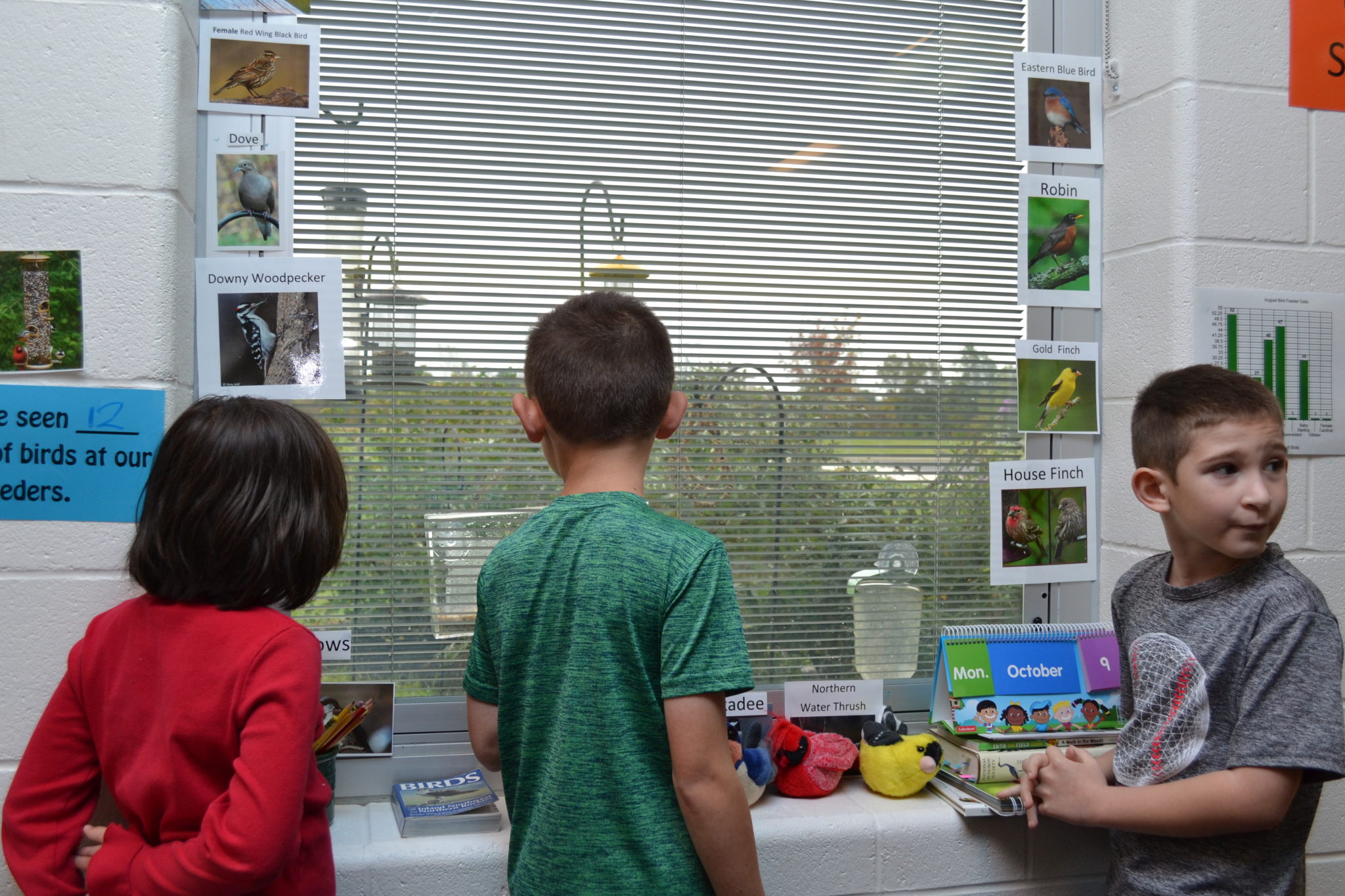Heidi Leeds, assistant principal of Summit STEM Elementary, has been reflecting on how they approach STEM with their elementary students. This year, she and principal Melissa Drury went back to the drawing board.
“ Just like everyone, sometimes you get project-y,” Leeds explained, “so we wanted to make sure that we were truly problem based, and that we were looking at students’ relevant, real world problems that they’re seeing in their community.” All around the school, students are encouraged to connect their classroom work to the world at large.
Just like everyone, sometimes you get project-y,” Leeds explained, “so we wanted to make sure that we were truly problem based, and that we were looking at students’ relevant, real world problems that they’re seeing in their community.” All around the school, students are encouraged to connect their classroom work to the world at large.
Cynthia Meisel’s classroom incorporated this mindset into her unit on erosion and deposition, investigating problems on the Lake Erie shore in northern Ohio. With an emphasis on the environment, students Gabe and Genevieve showed off their erosion tables, modeling the effects of rainwater moving soil to the coastline. These classroom concepts can lead to Ohio families losing parts of their backyards to the great lakes. Students explained a few strategies for combating soil loss, like breaking coastal waves with cinder-blocks, then gave common sense recommendations that any homeowner could follow.
Students in Mrs. Barlow’s intervention program worked to solve a problem that was a bit closer to school. “Some of the birds were running into the windows,” Leeds explained. Students Angela, Rafi, and Marco explained how they put up pictures of owls on the windows to scare the smaller birds away, saving their lives. They continued to observe birds at the birdfeeders just outside of the classroom, tracking population over time and learning about what their ecosystem can support.
Second graders approached problems within the school system, and sought to make a change. “They recently did a garbology unit,” Leeds explained, “so they took apart all of our trash at the school, just to see what problems that we have here.” They also visited the dump, where 4000 tons of trash end up every day. “3000 of that could get recycled,” explained second grader, Bianca. Leeds said that the trip made an impact on the students: “The kids came back and said – do we recycle here?”
After investigating, students discovered that every classroom had blue bins, but most of the time, they would just be combined with the regular trash. This troubled them. “We looked at trash and we saw how much waste we had,” second grader Peyton said. So, the ambitious students organized a letter writing campaign to the district’s new business manager.
Even when they were being critical of their own school, students put their STEM skills in action to make the world a better place. It’s all part of the plan, Leeds said: “We want them to have all of those 21st century skills to be able to seek out problems and continue their curiosity.”Summit didn’t have a new recycling deal at the time of the tour, but Leeds hinted that change may be coming soon. She is optimistic, both about their future recycling, and the bright future of elementary STEM in Reynoldsburg.

